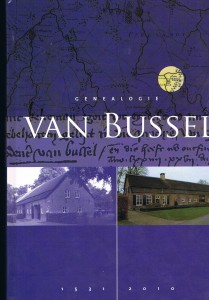In november 2017 nam ik deel aan een conferentie georganiseerd door de Universiteit van Uppsala over ‘archival studies’ na de ‘archival turn’. In het auditorium van de historische faculteit werden gedurende twee dagen ongeveer twintig presentaties gehouden over de invloed van archieven op de historische wetenschap. Het ging niet alleen over hoe historici archiefbronnen bestuderen, interpreteren en gebruiken, maar ook over de subjectiviteit van het archief zelf. Ik verzorgde een presentatie over mijn raamwerk van het ‘Archive-as-Is’ als een middel voor historici om de waarde van een digitaal archief te bepalen. Mijn leidende idee was dat historici moeten analyseren wat de oorspronkelijke context van een archief is en zich er van bewust moeten zijn dat een archief een ‘construct’ is, gemaakt door een organisatie en gevuld met informatie waarvan een organisatie heeft bepaald dat het in het archief komt. Een archief vervormt dus al bij zijn generatie de werkelijkheid en stelt die op basis van de informatie die het bevat anders voor dan dat die is. Mijn abstract van mijn presentatie (en later ook van het hoofdstuk dat hiervan in de uitgave van de conferentiebijdragen verscheen) luidde als volgt:
“Archives are, more than ever, organizational and technological constructs, based on organizational demands, desires, and considerations influencing configuration, management, appraisal, and preservation. For that reason, they are, more than ever, distortions of reality, offering biased (and/or manipulated) images of the past and present an extremely simplified mirror of social reality. The information objects within that archive are (again: more than ever), fragile, manipulable, of disputable provenance, doubtful context, and uncertain quality. Their authenticity is in jeopardy. The “Allure of Digital Archives” will be more about finding knowledge about the archive as a whole than about finding knowledge hidden in the information objects that are its constituents. It will be about determining the value of a digital archive as a “trusted” resource for historical research. To be successful in that endeavour, it will be necessary to assess the possibility to “reconstruct the past” of the digital archive. That assessment would allow historians to understand quality, provenance, context, content, and accessibility of the digital archive, not only in its design stage but also in its life cycle.
In this chapter, I present the theoretical framework of the “Archive–as–Is” as an instrument for such an assessment. It is possible for historians to use this framework as a declarative model for the way archives have been designed, configured, managed, and maintained. It will allow historians to understand why archives are as they are, and why records are part of it (or not). Using the framework, historians can determine the research value of a digital archive as a historical resource.
Meer dan vier jaar na dato is het boek dat van de conferentiebijdragen is gemaakt verschenen. Mijn hoofdstuk is als een bijlage bij deze post gevoegd.
Citatie: G.J. van Bussel (2022). ‘Determining the value of a Digital Archive. The Framework for the ‘Archive–As–Is”, A. Öhrberg, T. Berndtsson, O. Fischer, and A. Mattsson (eds.), From Dust to Dawn. Archival Studies after the Archival Turn, Uppsala, University of Uppsala, Studia Rhetorica Upsaliensia/Uppsala Rhetorical Studies, Vol. 8, pp. 56-101. ISBN 978-91-980081-5-9. Voor deze publicatie zie deze pdf.
Deze publicatie is ook geplaatst op Research Gate, SSRN, HvA Research, Academia en HAL.
Alle andere bijdragen (en een complete download van het gehele boek) worden op de site van de Studia Rhetorica Upsaliensia van de Universiteit van Uppsala aangeboden. Voor deze site klik hier.


